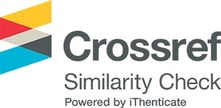ANALISIS PENERIMAAN PENGGUNA E-RAPOR SMP MENGGUNAKAN EXTENDED TECHNOLOGY ACCEPTANCE MODEL
DOI:
https://doi.org/10.33020/saintekom.v11i2.197Keywords:
Partial Least Square, Subjective Norms, Technology Acceptance ModelAbstract
This study aims to analyze the acceptance of junior high school e-Rapor users using Extended Technology Acceptance Model (TAM) by including Subjective Norms factor in the model. The research subjects were 60 e-Rapor users at public junior high school in Banjarmasin. Data collection instrument in the form of questionnaire consisting of 17 points of statement and using 5 point-Likert scale. The research data was analyzed using Partial Least Square-Structural Equation Modeling (PLS-SEM) with the assistance of SmartPLS 3.3.2 software. Based on the results of the study, it is known that Attitude towards Using Technology has a directly significant influence on the Behavioral Intention to use e-Rapor. On the contrary, Subjective Norms do not have a directly significant influence on the Behavioral Intention.
Downloads
References
Davis, F. D., Bagozzi, R. P., & Warshaw, P. R. 1989. User Acceptance of Computer Technology: A Comparison of Two Theoretical Models. Management Science, 35 (8), 982-1003.
Ghozali, I. 2014. Structural Equation Modeling, Metode Alternatif dengan Partial Least Square (PLS), Edisi 4. Semarang: Universitas Diponegoro.
Hair, J. F., Sarstedt, M., Hopkins, L., & Kuppelwieser, V. G. 2014. Partial Least Squares Structural Equation Modeling (PLS-SEM), An emerging tool in business research, European Business Review, 26 (2), 106-121.
Hartono, J. 2007. Sistem Informasi Keperilakuan. Yogyakarta: ANDI.
Henseler, J., Ringle, C. M., & Sarstedt, M. 2015. A New Criterion for Assessing Discriminant Validity in Variance-Based Structural Equation. Journal of The Academy of Marketing Science, 43 (1), 115-135.
Juliandi, A. 2018. Structural Equation Model Partial Least Square (SEM-PLS): Menggunakan SmartPLS. Pelatihan SEM-PLS Program Pascasarjana Universitas Batam on December,16-17 2018. Batam: Universitas Batam. DOI: 10.5281/zenodo.2538001
Kalinzi, C. 2019. Re: What does indicator's reliability indicate in PLS SEM specially in smart PLS results?. Retrieved from: https://www.researchgate.net/post/What-does-indicators-reliability-indicate-in-PLS-SEM-specially-in-smart-PLS-results/5dc18383aa1f0950d904d4a2/citation/download.
Kementerian Pendidikan dan Kebudayaan. 2017. Panduan e-Rapor SMP. Jakarta: Direktorat Jenderal Pendidikan Dasar dan Menengah.
Park, S. Y. 2009. An Analysis of the Technology Acceptance Model in Understanding University Students’ Behavioral Intention to Use e-Learning. Educational Technology & Society, 12 (3), 150–162.
Peraturan Menteri Pendidikan dan Kebudayaan Nomor 23 Tahun 2016 tentang Standar Penilaian Pendidikan.
Ringle, C. M., Wende, S., dan Becker, J.M. 2015. SmartPLS 3. Boenningstedt: SmartPLS GmbH, http://www.smartpls.com.
Sarstedt, M., Hair, J., & Ringle, C. M. 2017. Partial Least Squares Structural Equation Modeling, https://www.researchgate.net/publication/319669432_Partial_Least_Squares_Structural_Equation_Modeling, diakses pada tanggal 8 Desember 2020.
Venkatesh, V. & Bala, H. 2008. Technology Acceptance Model 3 and a Research Agenda on Interventions. Decision Sciences, 39 (2), 273-315.
Downloads
Published
How to Cite
Issue
Section
License
Copyright :
By submitting manuscripts to Jurnal Saintekom : Sains, Teknologi, Komputer dan Manajemen, the author agrees with this policy. No specific document approval is required.
- The copyright in each article belongs to the author.
- Authors retain all their rights to the published work, not limited to the rights set forth in this page.
- Authors acknowledge that Saintekom Journal: Science, Technology, Computers and Management as the first to publish under the Creative Commons Attribution 4.0 International license (CC BY-SA).
- The author may submit the paper separately, arrange for non-exclusive distribution of the manuscript that has been published in this journal into other versions (e.g. sent to the author's institutional respository, publication into a book, etc.), by acknowledging that the manuscript has been first published Jurnal Saintekom : Sains, Teknologi, Komputer dan Manajemen;
- The author warrants that the article is original, written by the named author, has not been previously published, contains no unlawful statements, does not infringe the rights of others, is subject to copyright exclusively held by the author.
- If the article is jointly prepared by more than one author, each author submitting the manuscript warrants that he or she has been authorized by all co-authors to agree to copyright and license notices (agreements) on their behalf, and agrees to inform co-authors of the terms of this policy. Jurnal Saintekom : Sains, Teknologi, Komputer dan Manajemen will not be held liable for anything that may arise due to internal author disputes.
Lisensi :
Jurnal Saintekom : Sains, Teknologi, Komputer dan Manajemen is published under the terms of the Creative Commons Attribution 4.0 International License (CC BY-SA). This license permits anyone to:.
- Share - copy and redistribute this material in any form or format;
- Adaptation - modify, alter, and create derivatives of this material for any purpose.
- Attribution - you must give appropriate credit, include a link to the license, and state that changes have been made. You may do this in any appropriate manner, but it does not imply that the licensor endorses you or your use.
- Similar Sharing - If you modify, alter, or create a derivative of this material, you must distribute your contribution under the same license as the original material.
Most read articles by the same author(s)
- Gunawan Gunawan, Septian Ari Wibowo, Wresti Andriani, Evaluasi Model Deep Learning pada Pola Dataset Biomedis , Jurnal Saintekom : Sains, Teknologi, Komputer dan Manajemen: Vol. 14 No. 2 (2024): September 2024







